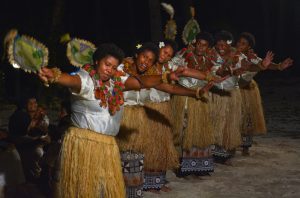It’s not an exaggeration to say that the world’s primary security problem is gender-based violence. Whether in conflict or technical peace, the threats of violence to women and girls are a constant and normalized occurrence. Time and again this violence transforms what should be the sanctuary of the home into a place of fear, torment, and far too often death. This violence is not only brutally inhibiting to the individuals who suffer it, but its consequences spiral up to infect almost every aspect of national health. It is an insidious form of social instability made worse by a failure to understand it as such.
No country can claim to do well in addressing the terror of gender-based violence. Even those countries that we consider to be the most gender equal – like the Nordic countries – still maintain significant rates of violence against women and girls. In Australia, one woman a week, on average, is killed by a partner, and Indigenous women are 10 times more likely to die due to assault than non-Indigenous women. Resentful reactions to female advancement can exacerbate the violence that women and girls experience. This is a brutal Catch-22.
The Pacific Islands region is not immune to this social scourge. In many countries throughout the region that are considered conventionally peaceful societies, the threats to women and girls are the primary form of social instability. Yet divorcing this insecurity from overall metrics of instability devalues the status of women and girls in security calculations and overlooks how these problems persistently hinder the region’s development goals. This is a recognition highlighted in a recent report from Asia-Pacific Development, Diplomacy, and Defence Dialogue on how Australia can enhance its cooperation on Women, Peace, and Security with the Pacific.
Understanding the connections between gender-based violence and broader instability is a central pillar of the Women, Peace, and Security agenda. A decade ago, a Regional Action Plan for Women, Peace, and Security was co-created by Pacific Island civil society organization, the United Nations, Pacific Islands Forum, and the Secretariat of the Pacific Community. Although this regional plan has not been updated or renewed since, several Pacific Island countries have devised their own national initiatives that have sought to build on this work.
However, as is the case globally, the task is considerable. Of the 12 countries that have undertaken national research on intimate partner sexual and physical violence in the Pacific, high rates have been reported for Kiribati (68 percent of female respondents), Fiji (64 percent), Solomon Islands (64 percent), Vanuatu (60 percent), and the Republic of the Marshall Islands (51 percent). Women and children with disabilities are also more likely to experience such violence.
The security risk and threats to the well-being of women and girls are compounded by a lack of participation of women in national decision-making. The Pacific continues to have the lowest levels of women’s political representation in the world with just 6 percent of seats held by women across the region. As much as there may be male political leaders who are empathetic to these problems, the knowledge, insights, participation, and direction of women leaders is critical for states to fully comprehend and address these problems in a more thorough and experienced manner.
Beyond politics, in the region’s security sector, formal security organizations are highly masculine with deeply entrenched structures that can prevent women’s meaningful participation. Responsiveness of police is often poor; for instance, six out of 10 women in Solomon Islands reporting violence to police received no help. Studies indicate there are deep failings of both state and customary systems of justice that need more attention, including privileging perspectives of women affected by violence in policy and practices.
While the household may often be a place of great insecurity for women and girls, other physical and sexual violence directed mainly at women and girls includes human trafficking and prostitution, often involving foreigners and industries such as fishing, logging, and mining, with young women and girls particularly vulnerable to exploitation. Although reporting and prosecution have proved difficult, various regional cooperation interventions such as the Pacific Regional Law Enforcement Conference are highlighting options for prevention and response.
Central to addressing these threats is comprehending how other security risks disproportionately affect women and girls. For instance, in times of natural disasters, women and girls may face increased risks of sexual violence due to poverty and the loss of family and breakdown of village social structures. Many women also have work that is informal or low status, and their livelihoods are more vulnerable to economic shocks and social disruptions, as we witnessed recently during the pandemic. Young women suffer from a double disadvantage of being young and female, which means they are least likely to be represented in politics, and more likely to face barriers to work.
Traditional culture and institutions also exacerbate gender-based violence in communities where maintaining the collective and communal interests are given prominence over individual rights of women and girls. Violence related to sorcery accusations is also an exacerbating factor affecting women, girls, and other vulnerable members of society in the Pacific region.
In the Pacific, security is enriched by the prominence of traditional mechanisms and culture, such as chiefs, churches, and local institutions. These can provide greater space for women’s participation but can also impose restrictions on women’s agency in relation to security. The embrace of the perspectives within the Women, Peace, and Security agenda by these traditional structures can prove highly influential and potentially transformative to the lives of women and girls who face the daily terror of gender-based violence.

































